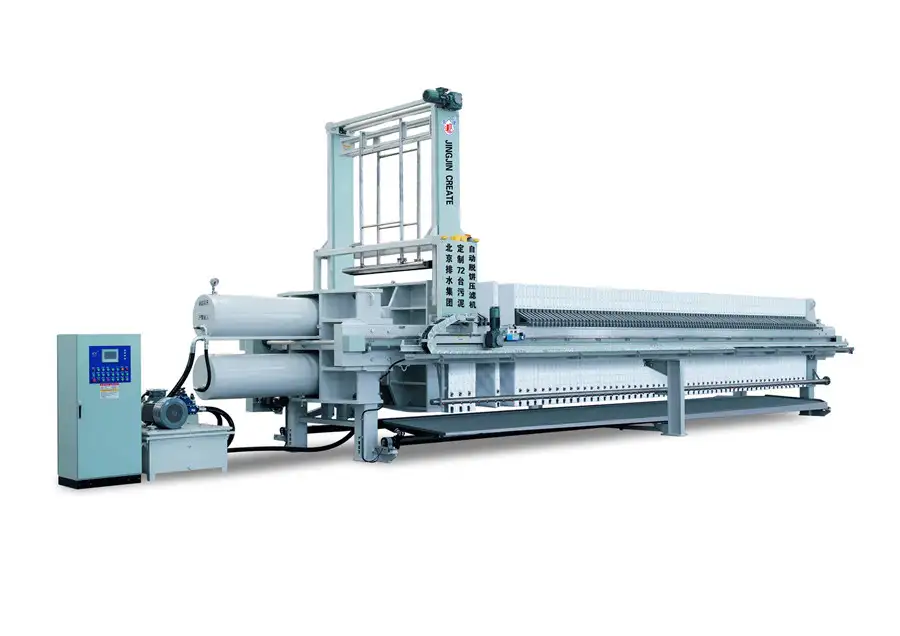What is the purpose of Depth filter press?
Set 3, 2024
Particles are eliminated from a liquid by depth filters. Put differently, the liquids may be finely filtered, clear, or sterile. For depth filtration, the “thick” filter media range in thickness from 2.5 to 4.5 mm. Two filtration principles are used to keep the particles in place:
first, surface filtering and
Secondly, depth filtering
In the depth filter, the liquid passes through an asymmetrical, three-dimensional fiber network. The solid components are retained by mechanical and electrokinetic processes. This raises the intake and adsorbing capacity considerably.

A filtration process’s goals are to either retain particulates (retentate) or cleanse a liquid (filtrate). The creation of liquid filtrate is the primary goal of depth filtration.
Filter sheets
Filter sheets consist of a combination of especially receptive fibers like cellulose and powdery, anorganic filter aids such as kieselguhr and/or perlite. The volume and kind of base material utilized as the filter assist, together with the grinding technique, can all be employed to determine the retention rate. Polymer resin is introduced in small amounts and functions as a wet-strength agent. The amount of positive charge—also known as the “zeta potential”—that passes through the filter sheet varies depending on the kind of polymer resin. The adsorption of tiny, negatively charged particles or microorganisms is enhanced by the positive charge.
The interior absorption volume of a typical depth filter sheet is up to 4 L/m2 of filter surface. A sheet filter contains during the filtration process multiple depth filter sheets, lined one after the other. This way a relatively small space can house a large filter area.
Using depth filter modules is an additional, faster, and more convenient approach to use depth filter sheets. A filter housing with a pre-loaded filter pack makes up this approach. When slurry particles fill the inner matrix, the depth filter modules run out of energy. The growing pressure differential between the intake (unfiltrate) and the output (filtrate) is one sign of this. Another sign of tiredness is a reduced liquid flow rate (1.5 bar for sterile filtration, 2.5–3 bar for clarifying filtration). It is possible for the filter to regenerate under specific situations.
Filter aids
When particle loads are high (about 1.5%), ordinary depth filters can quickly become blind. The capacity can be raised by employing a filter assist, such as kieselguhr (alluvial filtration procedure). Filter aids are suspended in a liquid and floated onto a supporting sheet in a plate and frame filter to form a filter cake in alluvial filtering. By doing this, the supporting sheets serve only as a support for the filter cakes—where the real removal of slurry occurs—rather than as filters in and of themselves.
This procedure uses a mechanism for particle separation that is comparable to filter sheet technology. Similar to sheet filtration, when the differential pressure rises, the filter arrangement is reaching its limits.
As the filter cake is usually thicker than the filter sheets, alluvial filters have a longer lifetime due to their greater slurry absorption capacity. Depending on the nature of the slurry, the removal and disposal of the filter cake is possible.
Jingjin, a leading China filter press supplier, offers innovative solutions for solid-liquid separation, including the advanced Depth filter press. Designed to handle complex filtration processes, the Depth filter press ensures maximum efficiency and clarity in a variety of industrial applications. With Jingjin’s expertise and commitment to quality, businesses can rely on their China filter press solutions to meet demanding filtration needs while optimizing operational performance.
